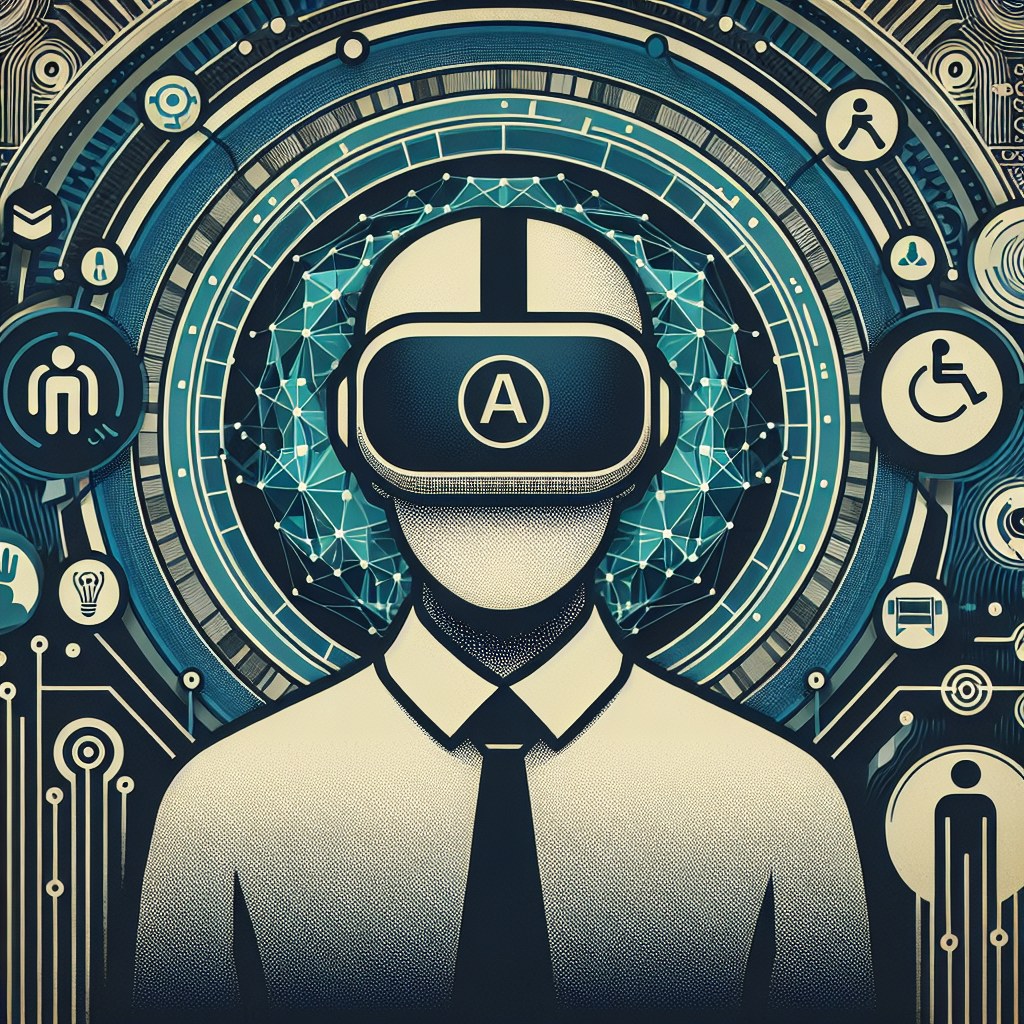Virtual reality (VR) technology has the potential to revolutionize the way we experience the world around us. From immersive gaming experiences to virtual tours of far-off destinations, the possibilities are endless. However, for people with disabilities, accessing and fully enjoying these experiences can be a challenge. Fortunately, advances in artificial intelligence (AI) are making VR more accessible than ever before.
AI technology is being used to enhance the accessibility of virtual reality experiences for people with disabilities in a variety of ways. From creating more inclusive user interfaces to providing real-time captioning and audio descriptions, AI is helping to break down barriers and make VR more accessible for all.
One of the key ways AI is improving accessibility in virtual reality experiences is through the development of more intuitive user interfaces. Traditional VR interfaces rely heavily on hand controllers and gestures, which can be difficult for people with physical disabilities to use. AI-powered interfaces, on the other hand, can adapt to a user’s unique needs and preferences, making it easier for them to navigate and interact with virtual environments.
For example, AI algorithms can track a user’s eye movements and use this data to control the VR interface, allowing people with limited mobility to navigate virtual worlds with just their gaze. Similarly, voice recognition technology can be used to enable hands-free interaction, making VR more accessible for people with mobility impairments.
Another way AI is improving accessibility in virtual reality experiences is through the use of real-time captioning and audio descriptions. For people with hearing or visual impairments, these features can make a world of difference in their ability to fully engage with VR content.
AI-powered captioning technology can automatically transcribe spoken dialogue in real-time, providing people with hearing impairments with access to audio content. Similarly, AI algorithms can generate audio descriptions of visual elements in virtual environments, allowing people with visual impairments to better understand and navigate VR experiences.
In addition to enhancing accessibility for people with disabilities, AI technology is also being used to improve the overall user experience in virtual reality. For example, AI algorithms can analyze user behavior and preferences to personalize VR content, making it more engaging and immersive for all users.
Furthermore, AI-powered avatars can be used to create more inclusive social interactions in VR environments. These avatars can mimic a user’s facial expressions and gestures, allowing people with disabilities to communicate nonverbally and participate more fully in virtual social interactions.
Overall, AI is playing a crucial role in making virtual reality more accessible and inclusive for people with disabilities. By leveraging the power of AI technology, developers can create more intuitive interfaces, provide real-time captioning and audio descriptions, and personalize VR experiences to meet the unique needs of each user.
FAQs:
Q: How is AI being used to improve accessibility in virtual reality experiences?
A: AI technology is being used to enhance the accessibility of virtual reality experiences in a variety of ways, including creating more intuitive user interfaces, providing real-time captioning and audio descriptions, and personalizing VR content to meet the unique needs of each user.
Q: What are some examples of AI-powered features in virtual reality experiences?
A: Some examples of AI-powered features in virtual reality experiences include eye-tracking interfaces, voice recognition technology, real-time captioning, audio descriptions, personalized content recommendations, and interactive avatars.
Q: How can AI help make virtual reality more inclusive for people with disabilities?
A: AI technology can help make virtual reality more inclusive for people with disabilities by providing alternative means of interaction, such as eye-tracking and voice recognition, and by offering real-time captioning and audio descriptions to enhance accessibility for people with hearing or visual impairments.
Q: What are some challenges in implementing AI-powered accessibility features in virtual reality?
A: Some challenges in implementing AI-powered accessibility features in virtual reality include ensuring the accuracy and reliability of AI algorithms, addressing privacy and data security concerns, and designing interfaces that are intuitive and easy to use for people with disabilities.
Q: What are some future developments in AI and virtual reality accessibility?
A: Some future developments in AI and virtual reality accessibility include the use of machine learning to improve the accuracy and performance of AI algorithms, the integration of AI-powered features into mainstream VR platforms, and the development of new technologies to enhance the inclusivity of virtual reality experiences for people with disabilities.

